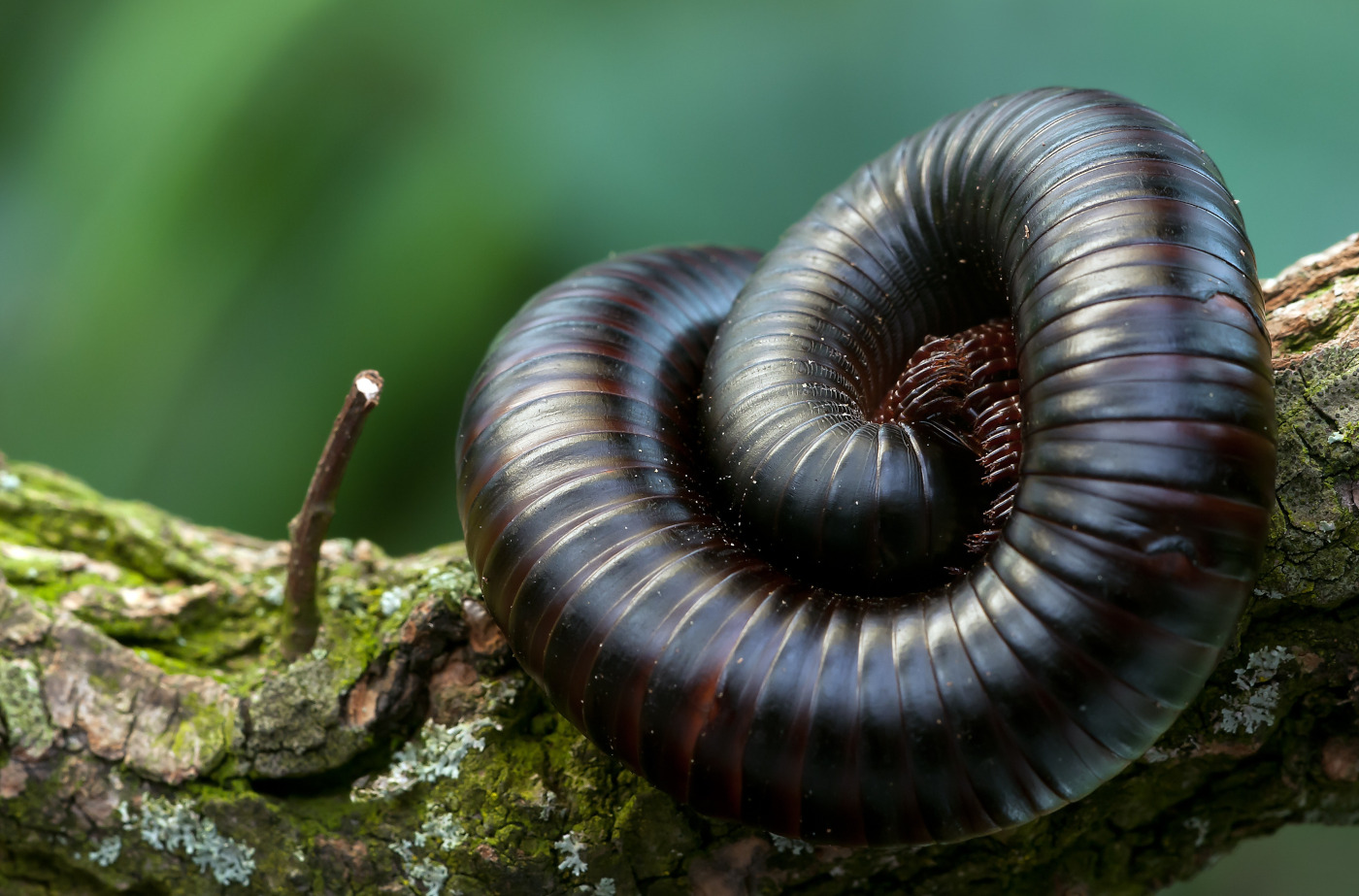Out of all the different species of giant millipede that roam our planet, there is perhaps none quite as impressive as the African Giant Millipede. Able to grow to lengths of 12 inches or more, it’s truly enormous even by giant millipede standards.

A Giant Among Millipedes
The African Giant Black Millipede is the largest millipede on earth. It can reach sizes of 12 to 15 inches (30 to 38 cm) long, and 2.5 inches (6.35 cm) in circumference.
Their bodies can range from solid black to brown colored, and are divided into roughly 30 to 40 different segments. They typically have around 250 to 350 legs.
The scientific name for the African Giant Black Millipede is Archispirostreptus gigas, though it’s not uncommon to see it shortened to simply A gigas on various websites and forums on the internet. You will also see this species referred to by the acronym AGB.
Natural Habitat
The African Giant Millipede comes from the subtropical forests of Africa. Like most species of millipedes (giant or otherwise), they mostly live on the forest floor. They typically spend their time crawling through the underbrush in search of food.
They are not predatory, instead being strictly herbivores. They feed on decaying plant matter such as fallen leaves and fruit, as well as rotting wood from logs.
Unlike many other species of giant millipede, these ones breed only once a year.
African Giant Millipede Pets
Giant African Millipedes can make great pets for those interested in them. Due to their impressive size, this species in particular is one of the most popular, well-known, and sought after of all the giant millipedes to keep as pets.

With the proper tank set-up and environmental conditions, they can thrive for 5 to 7 years, and possibly even longer. Since they can grow so large, it’s probably best to house them in a larger enclosure than might be necessary with some other, smaller species (especially if you have more than one).
Like with all giant millipedes, getting the substrate right is very important. Maintaining the right humidity and temperature is also critical.
If you live in the US, you will likely have difficulty finding giant African millipedes for sale (along will all millipedes that are not native to the US). If you live in Canada, you will not be able to at all, since owning them is illegal there.
Symbiotic Mites
Giant African Millipedes are usually found with lots of small mites crawling around on their exoskeleton. These mites actually have a symbiotic relationship with the millipede and are not parasitic or harmful. The mites work to keep the millipede’s enormous body clean and free of debris and small parasites. It’s very similar to the relationship between large sharks and Remoras out in the ocean.
These mites are actually noteworthy for another reason though. They are the reason that the importation of Giant African millipedes are banned in the US, along with all other non-native species of millipede. There was concern that these mites could get loose and have a devastating impact on agricultural crops. As a precaution, importing any non-native species of millipede was totally banned.
They are still legal to own, but can only be legally acquired from within the country (meaning from someone who imported or bred them before the import ban).
Canada however went a step further and banned not only importing, but simply owning non-native millipede species entirely. For this reason, African Giant Millipedes are illegal to own as pets in Canada.
Other African Giants
There are actually a couple of different species that could be considered African giant millipedes. While the African Giant Black (AGB) is the largest, there are two other species definitely worth mentioning.
Giant African Millipede (Spiropoeus fischeri)
This species is very similar to the African Giant Black millipede. It looks very similar, featuring the same black or dark brown coloration, and lives in much of the same regions of Africa. These two species also have confusingly similar common names, making it very easy to confuse them.
There are a couple of important differences however. While still among the biggest millipede species in the world, it doesn’t grow to quite the same length. They can reach a maximum size of only around 8 inches long, compared to the AGB’s 12 inches or more. Despite this though, there are a lot of people who prefer this species as a pet over the AGB, because it is generally easier to handle and hold.
This species has the scientific name of Spiropoeus fischeri (it actually used to be called Mardonius parilis acuticonus, but the name was changed).
Ghana Chocolate Millipede
Also known simply as the Chocolate Millipede, this species shares much of its characteristics in common with the other two, but typically has a lighter brown color, similar in appearance to chocolate (thus the name). In its natural habitat it can be found in more savanna type environments rather than only dense forests. Its scientific name is Ophistreptus guineensis.
An Even Bigger Millipede?
As massive as the African Giant Black Millipedes are though, there was once an even bigger species. Millions of years ago, in the strange and mysterious forests of the prehistoric past, there was a millipede so colossal it would have made every living species of millipede seem absolutely tiny by comparison.
